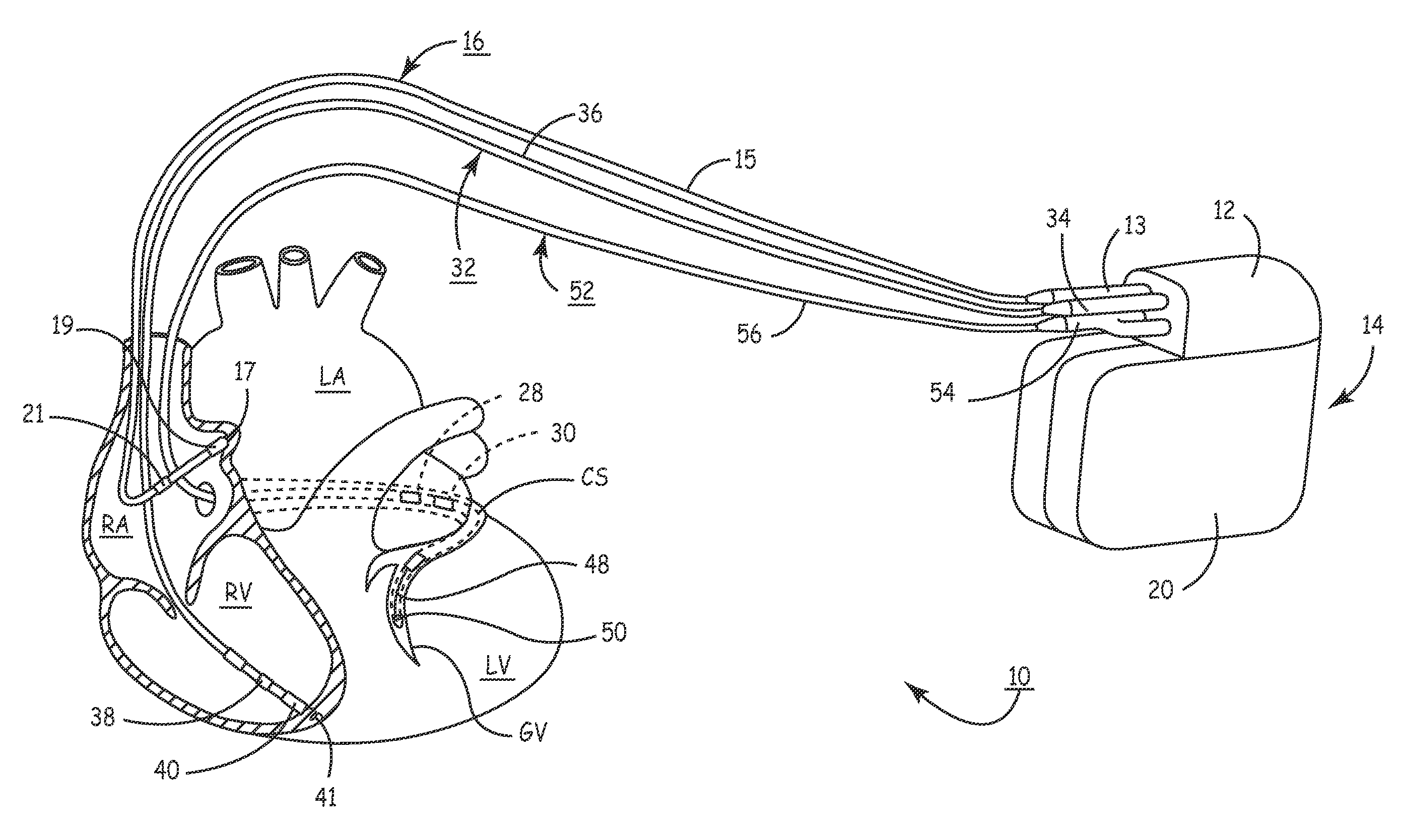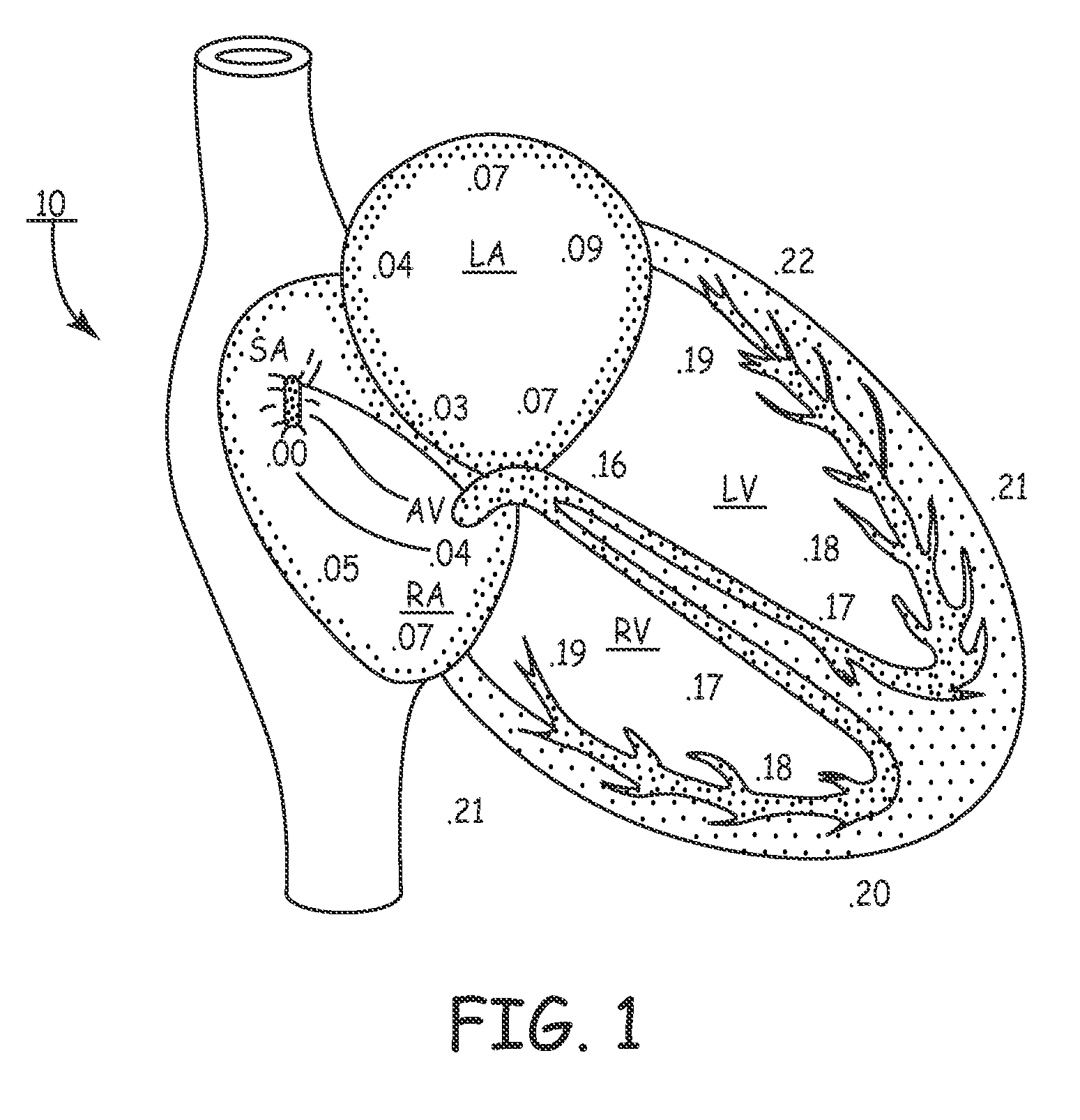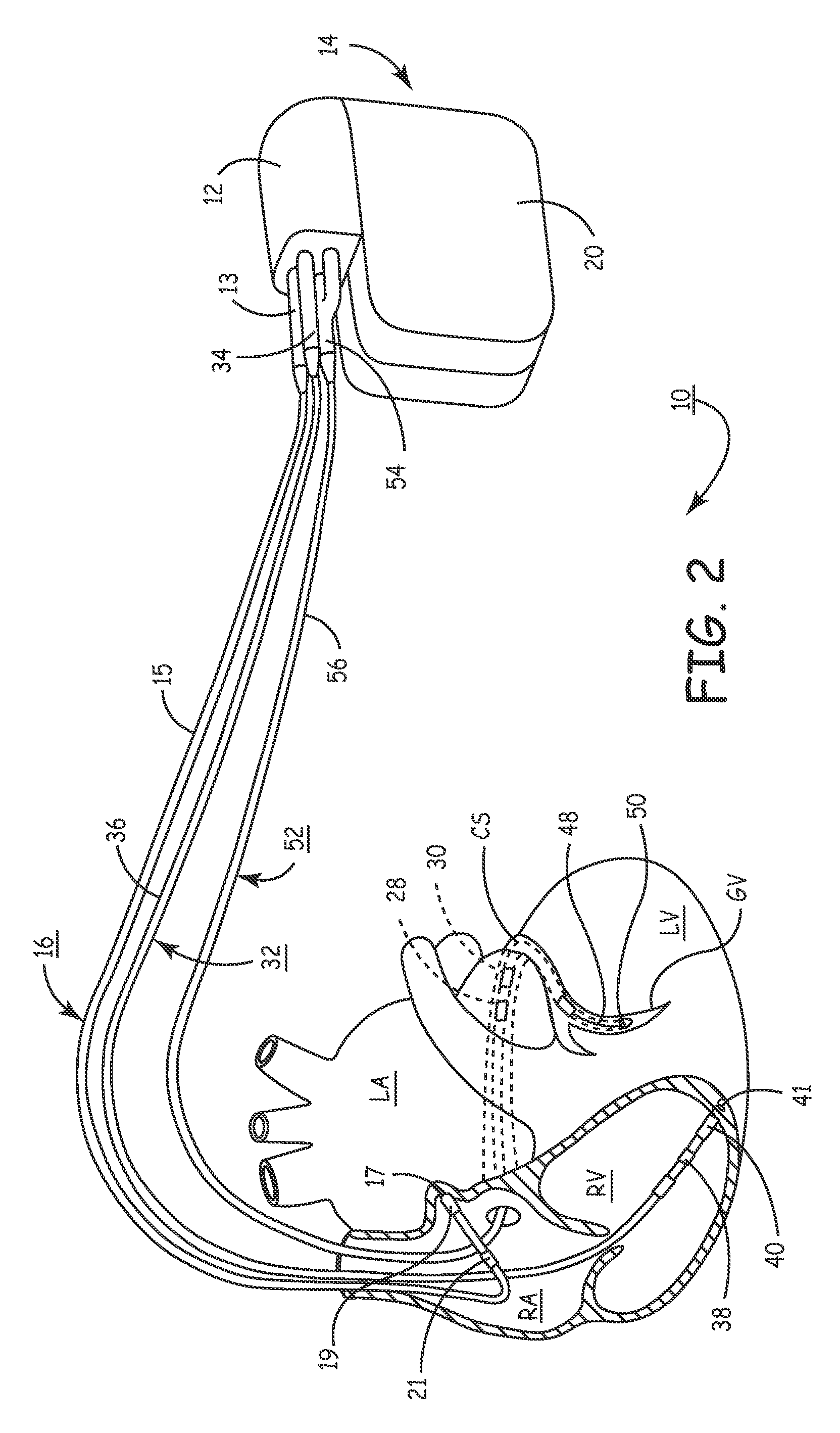Bi-ventricular ventricular capture management in cardiac resynchroniziation therapy delivery devices
a delivery device and bi-ventricular technology, applied in electrotherapy, heart stimulators, therapy, etc., can solve the problems of ineffective delivery of left ventricular capture, ineffective delivery of crt, and ineffective delivery of crt, and achieve the effect of greater likelihood of bi-ventricular captur
- Summary
- Abstract
- Description
- Claims
- Application Information
AI Technical Summary
Benefits of technology
Problems solved by technology
Method used
Image
Examples
Embodiment Construction
[0034]In the following detailed description, references are made to illustrative embodiments for carrying out methods of confirming pacing capture of ventricular pacing stimulation. It is understood that other embodiments may be utilized without departing from the scope of the invention. For example, the invention is disclosed in detail herein in the context of a bi-ventricular CRT delivery. In one form of the invention, a pacing regimen is modified to single-ventricle pacing therapy delivery wherein ventricular sensing in a first ventricle of a pacing stimulus delivered to a second ventricle is used to verify pacing capture in said first ventricular chamber. Thus, loss-of-capture (LOC) can be declared, verified or managed and one of several possible responses initiated. For example, the pacing pulse stimulus can be adjusted (e.g., modified pulse amplitude, pulse width, polarity, etc.), a pacing mode-switch can be implemented, and / or in relatively extreme cases a clinician can attem...
PUM
 Login to View More
Login to View More Abstract
Description
Claims
Application Information
 Login to View More
Login to View More - R&D
- Intellectual Property
- Life Sciences
- Materials
- Tech Scout
- Unparalleled Data Quality
- Higher Quality Content
- 60% Fewer Hallucinations
Browse by: Latest US Patents, China's latest patents, Technical Efficacy Thesaurus, Application Domain, Technology Topic, Popular Technical Reports.
© 2025 PatSnap. All rights reserved.Legal|Privacy policy|Modern Slavery Act Transparency Statement|Sitemap|About US| Contact US: help@patsnap.com



